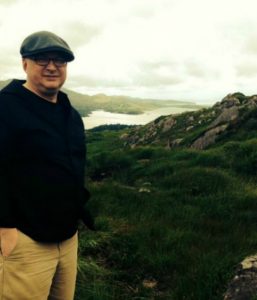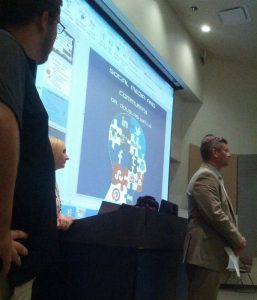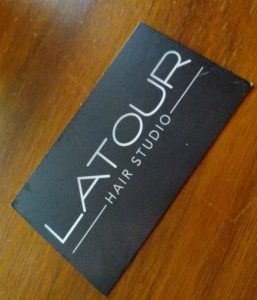Research Projects
Technical/Professional Communication
I am interested in the possibilities for technical/professional communication to not just critique but do social justice work though the design of user experiences. Currently, I am exploring the XA communication needs of rural Community Health Centers (CHCs). CHCs are non-profit, patient-directed organizations that provide comprehensive primary health care services to medically underserved communities in the United States and serve a diverse patient population, including low resourced geographic populations, low-income families, the uninsured, and individuals with limited English proficiency. Experience architecture (XA) is the design and planning of the total user experience of a product, service, or environment including embodied and digital interactions. Experience architects take a holistic approach to UX design, considering the user’s entire journey. Such diverse patient population backgrounds means challenges developing an experience architecture that fits the needs of its patient population. In addition, the arrival of the COVID-19 global pandemic intensified the importance the XA needs for telehealth and telemedicine services such as patient portals and text messaging to increase patient engagement.
Recently I worked with a UX professional on a user experience research project to address the problem of citizen science inclusivity in a public science project. In “Usability Testing and Experience Design in Citizen Science: A Case Study,” our paper grounds the discussion seeking to engage with citizen-users traditionally marginalized from citizen science projects in an experience report. Additionally, I have worked with graduate students on two activist application UX projects. Fair & Square is part of Michael Salvo and Liza Pott’s Rhetoric and Experience Architecture where we wrote about a mobile application design that relies on the engagement of restaurant consumers. The goal of Fair & Square is activism through the procedural rhetoric of the leverage of consumer’s choices to choose businesses that support fair labor practices for farm workers. Through the app, consumers can become low-barrier organized “activists” by electing to support local restaurants, grocery stores, or markets based on how restaurants and markets source their food stuffs and the personal cost to the farm workers who sourced them.
In “The Professional Work of ‘Unprofessional’ Tweets” I draw on a situational analysis methodology to understand the tactical online rhetorical choices of a young African American professional communicator, “Gina”. I draw on situated analysis to show how Gina engaged in her particular African American Hush Harbor (AAHH) of young African American professionals online. I make the argument that Twitter was used to maintain professional network ties in Gina’s AAHH community while resisting organizational discourses of surveillance. I further argue that analyzing particular choices in “boundaryless career” situations allows us to see important non-task based professional writing activity. I was happy to have the article nominated for Best Article Reporting Qualitative or Quantitative Research in Technical or Scientific Communication, NCTE (2017 – 2018).

 In Safely Social: User-Centered Design and Difference Feminism, my coauthors and I discuss a contextually-designed smartphone application design project informed by feminist theory developed in an effort to decentralize and redistribute power. Specifically, Safely Social seeks to ease location-based services’ adverse effect on domestic violence survivors by disrupting abusers’ power who can utilize location-based services as a means for tracking survivor social and geospatial activity. The design of Safely Social emerged from feminist standpoint theory, user-centered design, and activity theory in order to provide a contextual understanding of domestic violence survivors’ perspectives and experiences. I see both of these projects as part of a growing scholarship dedicated to making digital artifacts that focuses on the alignment of human social interactions and relationships as well as user experience and experience architecture.
In Safely Social: User-Centered Design and Difference Feminism, my coauthors and I discuss a contextually-designed smartphone application design project informed by feminist theory developed in an effort to decentralize and redistribute power. Specifically, Safely Social seeks to ease location-based services’ adverse effect on domestic violence survivors by disrupting abusers’ power who can utilize location-based services as a means for tracking survivor social and geospatial activity. The design of Safely Social emerged from feminist standpoint theory, user-centered design, and activity theory in order to provide a contextual understanding of domestic violence survivors’ perspectives and experiences. I see both of these projects as part of a growing scholarship dedicated to making digital artifacts that focuses on the alignment of human social interactions and relationships as well as user experience and experience architecture.
Increasingly, we find that small organizations and even individuals negotiating self-representations in organizations and user experiences in digital networked contexts. For example, my professional writing focused article “Distributed Value System Matrix: a new use for distributed usability testing,” (Walls, 2007) explores how User-Centered Design (UCD) principles, specifically those principles that view design through the lens of distributed usability, should be at the center of research into how organizations determine and value writing work. Based in activity theory, my argument for such an approach is that UCD principles, grounded in notions of Distributed Usability, function well as a research method to determine organizational values that may be invisible or ill defined. Since that article, my focus has shifted more towards individual knowledge workers mediated social network activity as they negotiate transorganizational and cultural complexities.
Digital Rhetoric
In my book chapter in Rhetoric and the Digital Humanities from the University of Chicago, I use “In/Between Programs: Forging a Curriculum between Rhetoric and the Digital Humanities,” to key in on moments of intersection and tensions between DH and Rhetoric as expressed through curricular decision-making. In that piece, I map both the spaces for alliance building but also the real tensions in larger concerns that face both Digital Rhetoric and Digital Humanities such as to the role of critical theories in research as well as institutional positionality, representation, and legitimacy. I argue that if rhetoric/composition studies and the digital humanities listen to each other, we can help each other not only in understanding tensions between praxis and gnosis but also in making many curricular decisions.
 I was fortunate enough to receive Honorable Recognition for the 2015 Ellen Nold Award for the Best Article in Computers and Composition studies for my article Access(ing) the Coordination of Writing Network, where I engaged the discussion of access within the field of computers and writing and revisit the issue of the digital divide. My discussion of access focuses on operationalizing access as what Annette Powell calls “access(ing)” (2007), a process of enacting and coordination between humans and nonhumans. Drawing on Actor-Network Theory and digital literacy narrative methodology, I present the story of Diana as a problematic case study through which I ask scholars to think about accessing in deeply ecological and newly traceable ways. I end by noting that stories like Diana’s challenge researchers to think of accessing as enacted, distributed, and traceable across networks.
I was fortunate enough to receive Honorable Recognition for the 2015 Ellen Nold Award for the Best Article in Computers and Composition studies for my article Access(ing) the Coordination of Writing Network, where I engaged the discussion of access within the field of computers and writing and revisit the issue of the digital divide. My discussion of access focuses on operationalizing access as what Annette Powell calls “access(ing)” (2007), a process of enacting and coordination between humans and nonhumans. Drawing on Actor-Network Theory and digital literacy narrative methodology, I present the story of Diana as a problematic case study through which I ask scholars to think about accessing in deeply ecological and newly traceable ways. I end by noting that stories like Diana’s challenge researchers to think of accessing as enacted, distributed, and traceable across networks.
For “The Infrastructure of Space: Expanding Writing Classroom Activity into the Extracurriculum” my coauthor and I explored ways of hacking the virtual space of classrooms. We considered how digital objects such as digital mapping tools and learning management systems can allow students and their work to shift and move through the physical walls of their assigned classrooms. Through the lens of actor network theory, the authors argue that digital tools can act as activity-generating objects, but only if—and when—networks of people and activities around those objects exist in a way that invite opportunities for meaningful writing work.
My research matters to computers and writing primarily in terms of how we think about mobile technologies, space, and access. The research I am exploring about workspaces in nonwork places lead to my article, “Hacking Spaces: Place as Interface,” Walls, D. M., Schopieray, S., & DeVoss, D. N. (2009), on educational space, computer environments, and using the “hacker” mentality in low institutional power situations. In this article, we analyze the complex rationales—both transparent to us and, at times, made visible—underneath the instructional spaces in which we work and teach. To do so, we first situate space analysis in the larger, national conversations about instructional spaces and then through the work of computers and writing scholars. We conclude with an analysis of instructional spaces at our institution. We attempt to return to the roots of hacking and to situate hacking as a particular tool for negotiating and, at times, disrupting the assumptions built under, within, and across instructional spaces. I see more potential here to discuss the impact mobile devices have on writing pedagogy, designing spaces to support that use, and understanding the impact of spaces that cannot be redesigned.
New Media
 I have explored the relationship between culture, professionalization, and technology in my own New Media work, especially the connections between culture, professionalism, and the rhetorical transformation of experience into useful knowledge making. My national award winning new media piece “
I have explored the relationship between culture, professionalization, and technology in my own New Media work, especially the connections between culture, professionalism, and the rhetorical transformation of experience into useful knowledge making. My national award winning new media piece “
An ‘A’ Word Production: Authentic Design,” Walls, D. (2008) for example, grew out of my own professionalizing and cultural experiences, “Authentic Design” embodies for me what my work with culture and technology is about. The translation of experience and the subversion of technological design, even very basic technological design, to accomplish rhetorical goals is in my mind, what access is about. New media projects intrigue at two levels important to my research goals. First, projects like “Authentic Design” do a tremendous amount of work to explain and make relevant complex connections between in professional writing, cultural rhetorics and technology in ways that make sense to people. That is to say, as I found with “Authentic Design” such projects can be accessible to a large number of audiences and build important allies. Secondly, the modes of production involved in such projects is a powerful learning and articulating experience for authors.